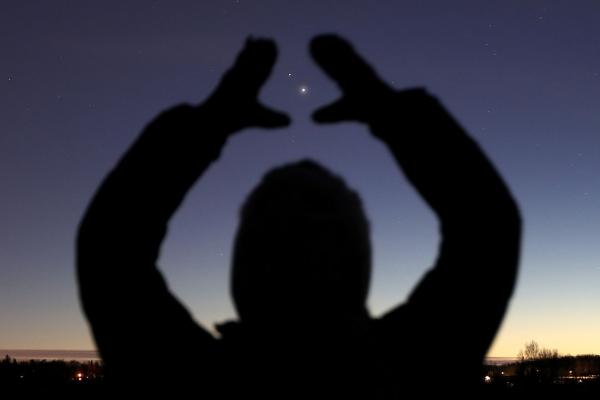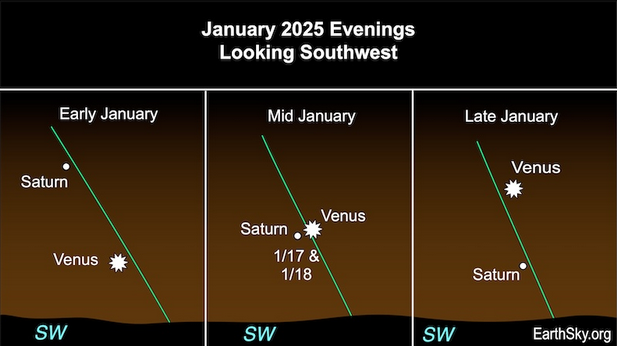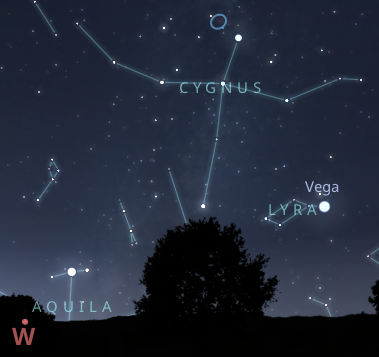What's Up? - Ohio Skylights January 2025

Constellations, Planets, and Astronomical Events Visible in January 2025
Happy January and happy New Year! I hope everyone is finding ways to stay warm with the blast of cold temperatures and snow currently hitting Ohio. Now that we’ve passed the Winter Solstice, the days are starting to get longer. We start the month with sunrise at about 7:53 am and sunset at about 5:17 pm. By the end of the month sunrise will be at about 7:40 am and sunset will be at about 5:50 pm.
Since we’ve just stepped into 2025 I want to talk about the orbit of the Earth around the Sun and what that means for our calendar. We use the Gregorian calendar which normally has 365 days in a year to correspond to the time it takes the Earth to orbit the Sun. However the Earth’s full orbit actually takes a little longer than that being about 365.2422 days long. This is why the Gregorian calendar features a leap year about every 4 years which adds a day to February making the month 29 days long instead of 28. Adding a leap year every 4 years actually over corrects, so the Gregorian calendar adds additional conditions for the leap year to fix this. The rule is as follows: “Every year that is exactly divisible by four is a leap year, except for years that are exactly divisible by 100, but these centurial years are leap years if they are exactly divisible by 400.” This means that the year 1900 was not a leap year but 2000 was. The next time we will see this happen is the year 2100.
The new moon this month will be on January 29th. The full moon will occur on January 13th. Mercury will rise in the eastern sky just before sunrise this month, but it will be fairly close to the sun making it hard, if not impossible to see. To make up for the difficulty in observing Mercury, Venus will be much easier to observe this month. Venus will be visible right after sunset in the southwest until about 9:00 pm. Venus is also at its greatest eastern elongation making this the best time to observe it. Venus will also appear to pass by Saturn this month as they near each other in the sky. This can be seen on January 17th and 18th and visualized in the diagram below.

Mars will be visible in the sky all night long this month as it rises about when the sun sets. Mars will also be at opposition on January 16th meaning Mars will be at its brightest. Jupiter will be visible after sunset in the eastern sky and will set in the early morning between 4:00 and 5:00 am. Saturn will be visible together with Venus this month as they approach each other in the sky.
This month will be your last chance to see the constellation Cygnus before it dips below the horizon, not to be visible again until the summer months. Cygnus is a well known constellation due to its brightest star, Deneb, making up one corner of the “Summer Triangle” asterism. In the image below you can actually still see the full Summer Triangle! The bright star at the top of the image below is Deneb marking one corner of the triangle. The other two corners are made up by Vega and Altair which are the brightest stars of the constellations Lyra and Aquila respectively. To catch these constellations before they disappear for a few months you’ll have to look above the Western horizon just after sunset.

Sources:
- https://www.timeanddate.com/sun/usa/columbus?month=1
- https://en.wikipedia.org/wiki/Gregorian_calendar
- https://en.wikipedia.org/wiki/Cygnus_(constellation)
- http://www.seasky.org/astronomy/astronomy-calendar-2024.html
- https://stellarium-web.org/
Image Credit:
- Venus and Mars: https://earthsky.org/astronomy-essentials/venus-after-sunset-greatest-elongation/
- Constellations: https://stellarium-web.org/
